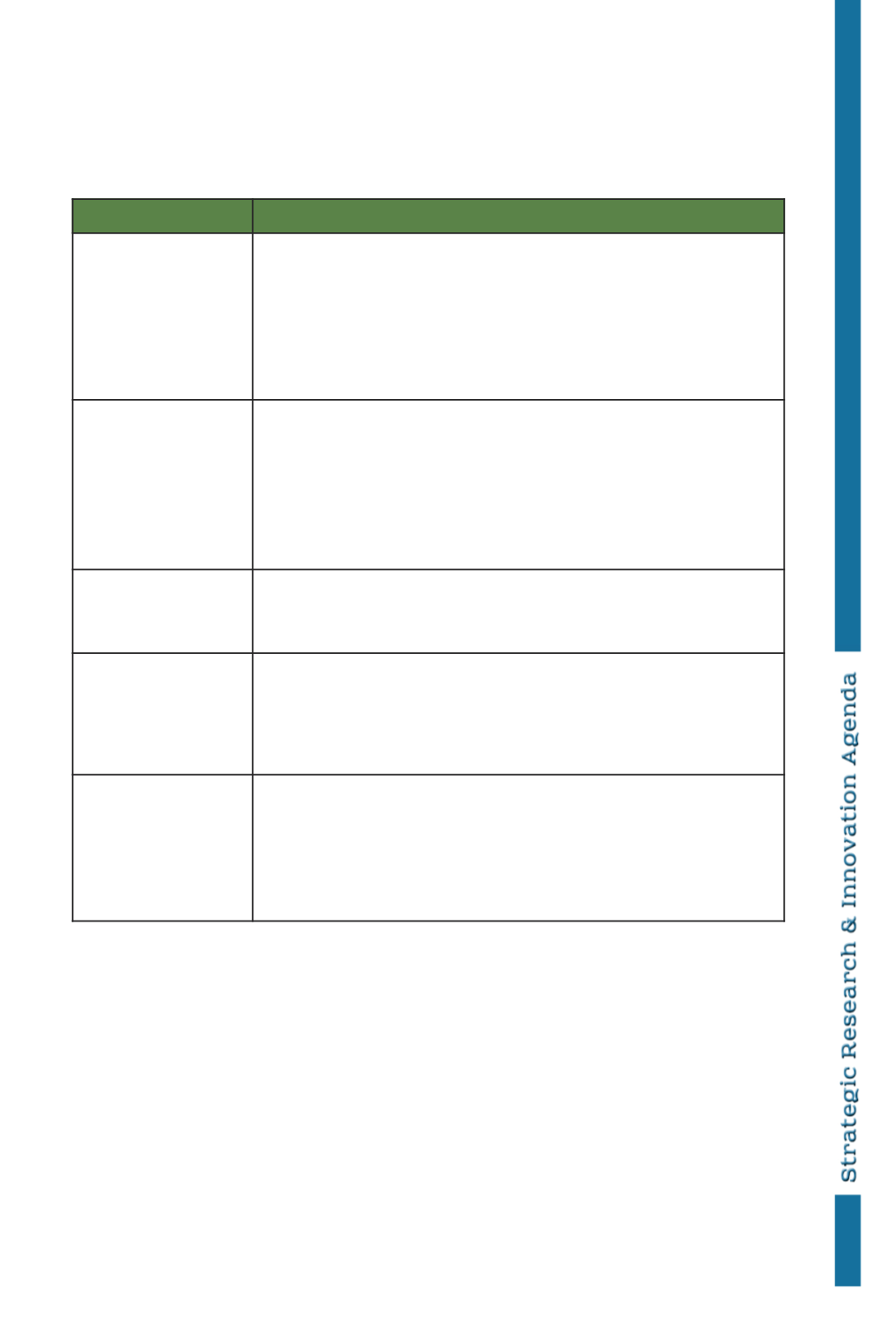
Expected Theme Impacts
Impact
Descri pti on
3.5.1 Enabling Sustainable Management
of Water Resources
Improving our understanding of water resources rests upon integrated water and catchment
management analyses involving surface water and soil management, erosion and pollution con-
trol, as well as environmental management and wastewater. The pressure for water reuse re-
sulting from increased water demand (quantitative and qualitative), climate change and climate
variability add relevance to this sub-theme. Links between pressures and water resources will
be established through research activities aimed at elucidating specific connections between
water resources, pressures and uses. The combination of observations and hydrological mod-
elling (water bodies, overland flow, vadose zone, groundwater and land cover) will be targeted
to ensure appropriate conceptualisation of the processes involved. Effective combinations of
Impact
Descr ipt i on
Social
The diversity of pressures and impacts on water bodies suggests
that water policy can only be effective if it is implemented in a close
‘horizontal’ dialogue with the stakeholders interested in clean water
and healthy water ecosystems. The impacts of water crises are not
equally distributed in society, and can be a source of conflict be-
tween different water users. Improved water management will alle-
viate societal tensions.
Economic
Economic instruments such as taxes and subsidies can act as incen-
tives for prudent water management. They constitute a vital com-
plement to water regulation, and can assist water allocation between
competing user demands. Mitigation measures and short-term solu-
tions to overcome water scarcity (e.g. water transfers) will be in-
cluded in the assessment of costs related to scarcity or drought, and
the assessment of economic vulnerability of users and assets.
Technological
Improvement of management techniques of water resources (aquifer
recharge, DSS,
inter alia
) with interoperability of databases, sensors,
combined socio-economic and physical water models.
Environmental
Both water quantity and water quality are key factors in aquatic and
riparian ecosystems. A decrease in available water resources jeopar-
dises environmental flows as a minimum requirement for a healthy
ecosystem. Other impacts include the loss of biodiversity and the
degradation of landscape quality.
Policy
Regulatory measures are essential tools to ensure compliance with
environmental standards of water quality and quantity. Economic pol-
icy instruments contribute to supporting these regulations, as ex-
pressed in the 2012 EU Water Blueprint. Understanding the
mechanisms leading to improved water management will lead to bet-
ter policy design and adaptation.
47


